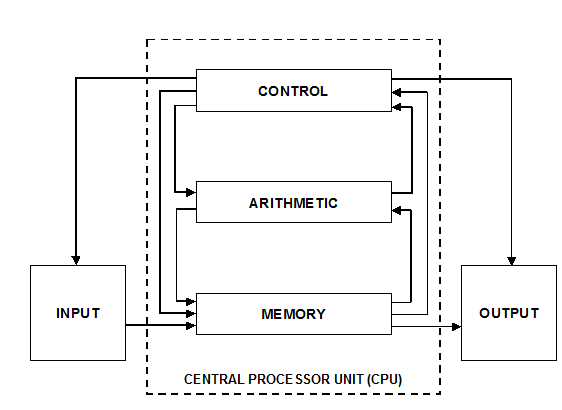Digital computer:
In the digital computer there are basically two types of input, namely Instructions, and Data from the various radio and non-radio sensors, which will be referred to collectively as information. Information must of course, be coded into a form, which the rest of the computer can understand, such as digital form.
The essential components of a digital computer are shown in Figure.

Coded information is passed to the memory in which it is stored until needed by the other units. The memory is divided into a large number of cells, each of which can store a word representing a piece of information. Each cell has a unique address, through which access to the information contained within that cell can be obtained. There are usually two types of memory, long term and temporary stores. The latter, often termed registers, will be used to hold intermediate results in calculations and data, which is to be processed next in the calculating sequence.
The arithmetic unit performs the actual arithmetic operations called for by instructions. It can be compared with a calculator.
The results of the calculations must be displayed in a suitable form easily interpreted by the pilot. This is the function of the output unit, which reads from the store.
The control unit directs the overall functioning of the computer according to the program of instructions in store. This program is known as software as opposed to the actual circuitry, which is termed hardware. Although control is drawn as a separate unit in the functional block diagram, the control hardware, which comprises timing circuits and electronic switches, is spread throughout the computer.
Information is read into the appropriate address of the store under the control of the software. In aircraft navigation applications, incoming data from sensors updates the contents of the store at a rate dependent upon the timing of the computer control.
The control acts on instructions held in store in the appropriate sequence. The basic task will be to transfer data from store to the arithmetic unit, to carry out the necessary calculations using registers to store the intermediate results, then writing the final result into the store.
The final control function will be to transfer data from store to the output as a result of built in instructions, or on specific instructions from the pilot.
This process of input - store - calculate - store - output is carried out sequentially in accordance with software requirements.